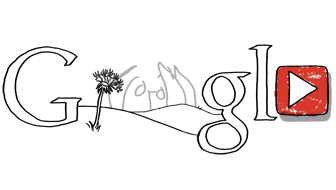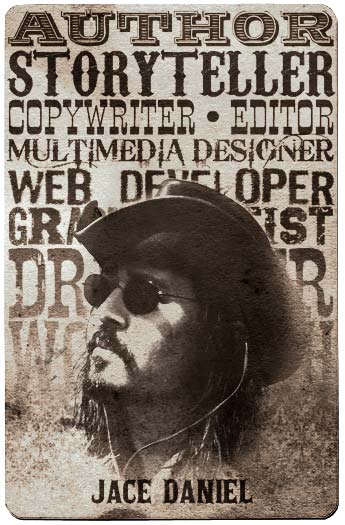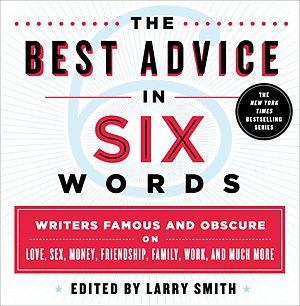Barbara Billingsley, best known for her portrayal of June Cleaver on television’s white-picketed classic Leave it to Beaver, has died at the age of 94. Rest in peace, blood.
The Earth is very old — 4.5 billion years or more according to scientific estimates. Most of the evidence for an ancient Earth is contained in the rocks that form the Earth’s crust. The rock layers themselves — like pages in a long and complicated history — record the events of the past, and buried within them are the remains of life — the plants and animals that evolved from organic structures that existed 3 billion years ago.
Also contained in rocks once molten are radioactive elements whose isotopes provide Earth with an atomic clock. Within these rocks, “parent” isotopes decay at a predictable rate to form “daughter” isotopes. By determining the relative amounts of parent and daughter isotopes, the age of these rocks can be calculated. Thus, the scientific evidence from rock layers, from fossils, and from the ages of rocks as measured by atomic clocks attests to a very old Earth.
Source: United States Geological Survey
The Moment: “Pocket Cowboys”
by Jace Daniel (b. 1969)
It was a balmy Saturday in Honolulu, the evening after I was born. Poker Night at my Uncle Danny’s house, and my old man was passing out cigars to the guys.
“Becoming a father has been the best moment of my life,” he said. “Deal ‘um!”
My old man had promised her he wouldn’t gamble again, but special occasions call for exceptions. After all, he was a new father, and it was a night to celebrate. Besides, since we weren’t scheduled to come home from the hospital until the next day, she’d never have to know. Her ultimatum — the one that threatened to take their baby and move to the mainland if he ever lost their money gambling again — could wait one more day.
Sitting in the big blind with five other players calling before the flop, my old man looked at his hole cards: the King of Clubs and the King of Spades. Pocket cowboys, as they were known on the mainland. Or, in that case, paniolos. Hawaiian for cowboys. Two of them. Must have been a sign.
“Raise ‘um,” my old man said with a forced reluctance, pushing another ten dollars worth of plastic chips into the pot. Ten dollars was a decent piece of pocket change back in 1969. Two weeks worth of gasoline. All the players loosely called, as the night was young.
The flop came: Ace of Clubs, King of Diamonds, King of Hearts.
The old man had flopped a miracle four of a kind! His goal at that point was to keep everybody in the hand, and let the pot grow as large as possible. It was his chance to finally make up for those two blown paychecks the previous month.
“Check ‘um,” my old man said.
The player to his left, Marvin, bet ten dollars, possibly seeking information. Two other players called, sending the action back to my old man with the four Kings.
“Columbus took a chance,” my old man mumbled, faking a nervous smile. He smoothly called Marvin’s bet, pushing another ten dollars into the growing pot. With two more cards to come, now was not the time to scare everybody away with a raise.
The turn card came: 6 of Hearts. An excellent card for my old man, making it possible for somebody to have an outside shot at a Heart flush. Blood, as my grandfather would call it. All the same suit. Family.
“Check ‘um,” my old man said.
Marvin bet twenty dollars. Strong. To my old man’s dismay, the remaining two players folded, leaving him heads-up against Marvin, who obviously wasn’t going anywhere. My old man figured Marvin must either be on a flush draw, or maybe two pair. Marvin gambled with Ace rag all the time.
“Raise ‘um,” my old man said, peeking once again at his pocket Kings before pushing another forty dollars worth of chips in the pot.
“Call!” Marvin shouted. “Try show me da kine!”
The pot had grown larger than an entire paycheck. My old man riffled the stack of chips in front of him, the remainder of an entire week’s pay. If he could just find a way to push all his chips into the pot and get Marvin to call his unbeatable four Kings, he’d walk out of there with nearly a month’s worth of salary in cash. Not a bad way to end a week. Not a bad way to begin fatherhood. Hopefully a Heart would come on the river, giving Marvin a possible flush.
The river came: Ace of Spades.
If Marvin was chasing the Heart flush, he missed it. If he did in fact have an Ace, he’d be sitting on a full house, Aces full of Kings, and he’d surely bet.
“Check ‘um,” my old man said, giving Marvin a chance to bet at the pot. Or perhaps even bluff. In either case, if Marvin bet anything, my old man was planning to come over the top with the ol’ check raise.
“All in, brah!” Marvin pushed all of his chips into the pot. Over another hundred dollars worth, enough to scare away anybody who didn’t have an unbeatable hand.
“Call,” my old man said, throwing his two Kings face up on the table. He stood from his seat with a victorious grin that wouldn’t quit.
Until Marvin turned up pocket Aces.
We moved from from Hawaii shortly after I was born, and I’ve missed the homeland ever since.
Is there an instant when your life changed? Go tell the world about it at SMITH Magazine’s cool new project, “The Moment“. Writers everywhere are submitting stories of how a single moment changed their lives in a profound way. Your Moment might be a split-second decision, something you witnessed, a message sent or received, a literal or mental discovery. Moments can be serious or silly, as short as a tweet, as long as 700 words, told via a single image or illustration, series of photos, or a scanned letter or post-it note.
For a chance to be in the new book coming in 2011 by the creators of the New York Times bestselling Six-Word Memoirs franchise, submit your Moment here.
The actual entry for this moment entitled “Pocket Cowboys” can be seen here.
Google is saluting John Lennon’s 70th with a rather cool music player Google Doodle that plays a 32-second clip of the classic song ‘Imagine’. Click today’s Google logo to check it out.
“Everything is clearer when you’re in love.”
— John Lennon
 We’ve all looked up at the sky and wondered. We’ve also heard our share of theories, mathematical descriptions, and wordy attempts to put into comprehension the size of the universe. The whole concept can be so mind-numbing that we effectively tune out, buried by the sheer immensity of it all. “It’s huge,” we all think to ourselves.
We’ve all looked up at the sky and wondered. We’ve also heard our share of theories, mathematical descriptions, and wordy attempts to put into comprehension the size of the universe. The whole concept can be so mind-numbing that we effectively tune out, buried by the sheer immensity of it all. “It’s huge,” we all think to ourselves.
M has queued up The Universe on Netflix, and we’ve cracked into a couple episodes in the series. The topics explored include the Big Bang, the sun, the nine planets, cosmic holes, other galaxies, astrobiology, extraterrestrial intelligence, and so on.
The other night, unable to sleep, I jumped ahead to the final episode in the collection, Beyond the Big Bang. This is not a topic unfamiliar to anyone who’s seen late-night cable television, but it presented a visual that I’m still thinking about days later. Particularly tonight, while walking the dogs under the stars.
Follow me on this one. It gets pretty geeky, so hang in there.
Let’s begin with the speed of light, and the concept of a light year. Do any of us really comprehend what that means? A light year? A light year is the distance light travels in one year. Light travels 186,000 miles per second. To put this into perspective, imagine turning on a flashlight and shining it across the ground. The flashlight’s beam would travel around the circumference of the earth seven times in one second.
SEVEN times around the WHOLE earth in a SINGLE second.
Think about that. And compare it to your most recent transcontinental flight in an airplane. You’d have to ride a bicycle as fast as you can nonstop 24 hours a day for nearly two years to cover the distance light travels in a one second.
Okay, back to our show.
In the ‘Beyond the Big Bang’ episode of ‘The Universe’, they did a remarkable job at illustrating just how far away our neighboring stars are from us. Now, we’ve all looked up at stars, right? And we collectively agree that they’re really, really, really far away. Like, you know, millions of light years or whatever. But just what does that mean, exactly? Can our minds even begin to comprehend such distances?
Here’s the visual ‘The Universe’ uses to describe just how far away the stars in the sky are from us:
Imagine our sun. It’s the center of our solar system, nearly a million times larger than our own planet. Now, for a moment, imagine that our sun is a marble on a sidewalk in Manhattan, New York. Earth, by comparison, would be nothing more than a grain of sand about an inch or three away from that marble. Can you see it?
Visualize that marble sitting in the streets of New York City. Now, to give you an idea of how far away we are from everything, the star nearest to our own sun is a sun called Betelgeuse. If Betelgeuse were a marble in our illustration, it would be sitting in Washington DC. To get to Betelgeuse by a rocket would take us over 75,000 years. To shine a light to Betelgeuse would take about four years. Four years at the speed of light.
But wait. That’s nothing. The second closest star to our sun is ridiculously farther away than Betelgeuse. How far away, exactly? Well, if it were a marble in our illustration, it would be in Rio De Janeiro. That means the closest star besides Betelgeuse is 100 light years away from our sun.
But it’s just a number, right? Again, mind-numbing. So mind-numbing that we don’t even feel it anymore. But here’s what dawned on me:
When we go out to the sky and look up, the light we see from that neighbor star is 100 years old, meaning it left the star 100 hundred years ago and is only arriving to Earth now. 100 years is a long time. Longer than most lifetimes. And in an almost lazy way, due to the roundness of the number 100, it’s as if we disregard it before stopping to truly comprehend it. 100 years, people. At the speed of light.
For additional perspective, let’s turn our attention to The Flintstones, who celebrated their 50th birthday last week. Ponder the concept of 1960 for a moment. Go back to that evening The Flintstones first aired. Imagine somebody getting up from the television, grabbing a flashlight, and going out to their front lawn to shine it into the sky. That beam has been traveling at the speed of light since 1960, for 50 years, nonstop. It’s been traveling as we’ve lived out our lives, fought our wars, dreamed our dreams, elected our presidents, tossed out our fashions, changed our evolving musical tastes. For generations. People have been born, lived full lives, and died since 1960, and that flashlight beam has continued its course, at the speed of light, in our sleep, traveling nonstop to that neighbor star.
And its only halfway there.
Take that concept and apply it to the reality that our sun and that neighbor star are only two stars in a galaxy of billions of stars, each of them just as far away from each other as these two. And when you get to the edge of our galaxy, you’ll reach an incalculable void that separates it from yet another galaxy, which in turn is just one of billions of other galaxies.
This is nothing we haven’t known all along, I suppose. But the whole marble analogy the other night painted the obvious picture for me quite clearly, and it’s tickling my brain in a noticeable way this evening. To say the numbers are staggering is cliche, and I am among the many who must laugh at those who conclude that Earth’s Man is the end of creation’s line. Such a conclusion is based on fear, confusion, and ignorance.
Do the math. How self-centered must a creature be to think the universe revolves around it? It seems to me that its creator would regard such a notion as one of His universe’s greatest sins.












